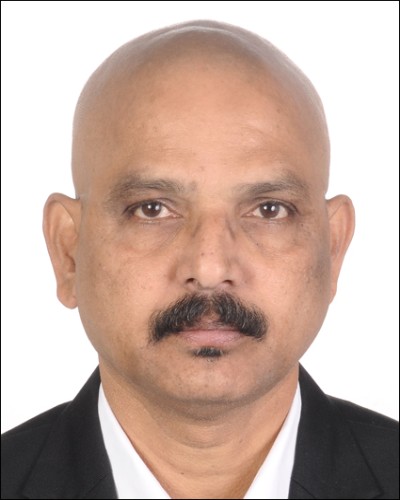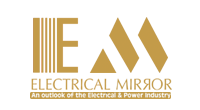
GENERAL MANAGER
( ACCURATE OPTOELECTRONICS PVT. LTD. )
MR. K.P. BABURAJ
"To excel among them, we effectively focus on some marketing research and customer satisfaction strategies. Ensuring consistent quality among all the products can help in building trust with customers."
Q. What are the primary applications of thermal imaging technology, and how have they evolved over the years?
The major areas of application for thermal imaging cameras are: Process and manufacturing Industries, Medical Imaging, Firefighting, Military and Defence, Predictive maintenance, Building inspections etc. Alongside improvements in hardware, there have been significant advancement in image processing algorithms as well as software for thermal imaging. It has evolved from its early military origins to become a versatile tool with many applications around industries and integration with other technologies.
Q. Can you explain the basic principles behind how thermal cameras work, and what distinguishes them from conventional cameras?
Basically, thermal cameras provide a non-contact method for visualizing temperature differences in a scene. Thermal cameras work on the basics of Thermography. Infrared waves, which are not visible by human eye but can detected as a heat. All objects emit infrared radiations, known as heat signature. An infrared camera (also known as a thermal imager) detects and measures the infrared energy of objects. The camera converts that infrared data into an electronic image that shows the apparent surface temperature of the object being measured. Thermal cameras and conventional cameras have different working principles, have different types of sensors used and application areas are also very different. Thermal cameras detect infrared radiation and provide information about temperature changes, while conventional cameras capture visible lights to form visual images.
Q.In what industries or sectors are thermal cameras proving to be particularly beneficial, and why?
Overall thermal cameras proved to be a versatile solution across various industries, Research and development processes, medical field, defence sectors etc. This has enabled enhanced safety, efficiency and reliability where conventional cameras and other temperature measurement solutions may fall short. Their ability to detect temperature and to operate in harsh environment makes them a valuable tool in modern day environment.
Q.Why are thermal cameras important for Electric substation monitoring?
A Typical substation consists of several electrical equipment such as CT (Current Transformer), PT (Power Transformer), CB (Circuit Breakers), Surge or Lightning etc. These equipment generates hotspot due to high voltage or current. This can cause the breakdown of the entire substation. By using thermal camera, we can get early alerts of hot-spot areas and can prevent blackout or power cutoff conditions.
Q.What are the primary benefits of using online thermal imaging technology in substation monitoring compared to traditional methods?
• Saves time and manpower.
• Improves safety of plant personals.
• 24/7 Real-time and automatic Substation Monitoring System.
• Reduce breakdown with preventive maintenance.
• Ease of operation.
• Reduce O&M costs for unnecessary maintenance & inspection.
• Reduce unexpected failures and associated collateral damage.
• Extend life of old but healthy assets Q.What are the key features of Software coming along with the Thermal Cameras?
• Multiple types of ROI including point, line, and area with min./max./avg. temperature display.
• Temperature display on mouse over • Includes 9 different colour palates according to user application.
• User can connect up to 8 thermal cameras in one software.
• Critical and threshold alarm generation for entire or ROI based on minimum, maximum or average temperature.
• The AccuOpt InfraView software allows users to create charts and histograms that display the relationship between temperature and time in the stream.
• The software allows users to capture snapshots in normal JPG as well as RAW file format.
• Saves the data from the ROI (Region of Interest) Summary, Chart, and Histogram in a database. Users have the option to export this data into Excel file formats.
• Video Recording
• The software provides a playback option, allowing users to access previously saved videos.
• SMS/Email Alerts
• I/O module and OPC/UA Integration
Q. What are some common challenges or limitations faced when implementing thermal cameras for substation monitoring, and how can they be addressed?
Environmental conditions: Substations are often situated in a harsh condition such as extreme temperatures, humidity, exposure to heat and dust etc. These can affect the overall performance of the camera. To overcome this, thermal camera specially designed for substation with IP-66 protection should be used. Distance and coverage: Substations can be of large area and ensuring the complete monitoring may require installing multiple cameras at strategic locations. One should use thermal cameras with appropriate focal length to cover maximum area coverage and less blind spots. Data management: Managing and storing large amount of thermal data from multiple cameras can be a complex task. User should implement centralized management and real time monitoring software for better management of data for future purposes also.
Q. Looking ahead, what do you envision for the future of thermal imaging technology and its applications?
The future of thermal imaging is promising with potential applications spanned across various industries and domains. As technology prevails, thermal imaging solutions will play an important role in increasing safety, efficiency and understanding various aspects in our lives. Some examples of envisioning of what the future holds of thermal imaging are:
• Smaller size and integration
• Better resolution and sensitivity
• Machine learning and Artificial intelligence
• Medical diagnosis
• Traffic monitoring and public safety
• Monitoring wildlife populations
• For studying climate changes
Q. Are there any other suppliers providing similar products in the market, and if there are, how do you excel among them?
As of now, Accurate Optoelectronics is the only manufacturing company of Radiometric Thermal Imaging cameras in India. We not only manufacture surveillance thermal cameras but also accurate temperature measuring cameras for precise process monitoring. We have a competitive market where multiple companies are selling similar products globally. To excel among them, we effectively focus on some marketing research and customer satisfaction strategies. Ensuring consistent quality among all the products can help in building trust with customers. Optimizing the supply chain, timely deliveries and costeffectiveness to meet demand fluctuations in different application areas can be a major point to success in a competitive market. Also, flexibility and adaptability to changing market conditions along with strategic partnerships and collaboration can enhance the brand reputation and attract the customers worldwide.


